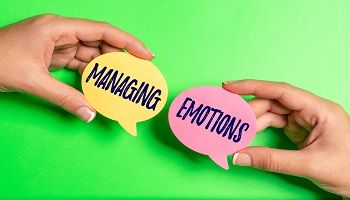Best of PMTimes – The Faux Thinking: “I Know It All”
Often, I feel I am living under a delusion that I know the answers to all the questions when it relates to me.
Fair enough, right? Each of us knows ourselves the best. However, a self-assessment check is not only a healthy habit but also aids in taking corrective actions based on the results. How do I perform a self-assessment? Here’s an idea to conduct this evaluation test: Ask questions by playing the role of a stakeholder (describing your needs) and a business analyst (eliciting requirements) at the same time. I know what you are thinking, “How is interviewing myself going to add any value?” This simple yet powerful technique forces us to reflect and come up with honest responses. You will be surprised to see how much of a gap is there between what we are thinking vs what responses we give when questioned.
Imagine you are considering pursuing a certification. Here are a few questions you can ask yourself:
Interviewer (You): Why do you want to become certified?
Response from stakeholder (You): I want to enhance my professional credibility. Also, the sense of accomplishment that I met a professional goal will be satisfying.
Interviewer (You): What specific problems are you facing in your progress towards achieving this certification?
Response from stakeholder (You): I am unable to take out time to prepare for certification and tend to procrastinate.
Interviewer (You): What are you going to do to stop procrastinating?
Response from stakeholder (You): By scheduling the exam date and then backtracking to prepare based on this date.
Interviewer (You): What are the risks associated with this certification?
Response from stakeholder (You): Time and opportunity cost.
Interviewer (You): How would you measure success?
Response from stakeholder (You): Passing the certification exam on the first attempt.
Interviewer (You): What if you don’t pass in your first attempt?
Advertisement
[widget id=”custom_html-68″]
Stakeholder (You): I will focus on the topics I didn’t score well and schedule my next exam date so that I don’t procrastinate (again!)
Interviewer (You): How will this certification add value to your career?
Response from stakeholder (You): I can apply what I have learned to my daily work and it gives the external world a chance to interpret my level of knowledge in my domain.
Interviewer (You): What would you do differently from what you have done in the past?
Response from stakeholder (You): I will allocate dedicated study time and follow a schedule diligently.
A few recommendations relating to the self-assessment check:
- Tailor the interview questions to whatever you would like to achieve (personally or professionally). Tip: Find sample questions online.
- Questions and responses can be short or extensive.
- Skip the typical questions that you would ask in a requirements elicitation session. Example: You don’t have to ask who is going to benefit from this initiative since this is an exercise for yourself.
- You must be self-disciplined to conduct this interview at least once a year. Tip: Schedule a meeting on your calendar for a self-assessment check.
- You must be honest when responding to questions.
- You must take time to evaluate your interview results and analyze areas of improvement.
What next after this interview? Create a “to-do” list based on the interview results and post it in a place where you can see it. At a minimum, it will be a reminder to work on those action items before it goes off your radar. I hope you can follow the interview style (or come up with a style of your own) to help you to track progress towards your goals.
“My goal is not to be better than anyone else but better than I used to be” (tinybuddha.com)





